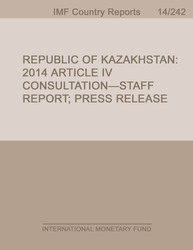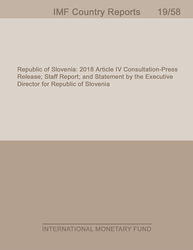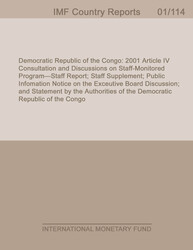
Republic of Kazakhstan: Staff Report for the 2014 Article IV Consultation
Volume/Issue:
Volume 2014
Issue 242
Publication date: August 2014
ISBN: 9781498305235
$18.00
Add to Cart by clicking price of the language and format you'd like to purchase
Available Languages and Formats
| English | ||||
| Russian |
Prices in red indicate formats that are not yet available but are forthcoming.
Topics covered in this book
This title contains information about the following subjects.
Click on a subject if you would like to see other titles with the same subjects.
Banks and Banking , Exports and Imports , Public Finance , ISCR , CR , monetary policy , fiscal policy framework , exchange rate , government , private sector , near-term fiscal policy stance , headline inflation , banking sector recovery , Exchange rates , Oil , Exports , Central Asia , Global , Middle East and Central Asia , Central Asia and the Caucasus , Europe
Also of interest
Summary
KEY ISSUES Context: Solid growth in recent years, supported by high oil prices and output, has boosted living standards. This year, the economy is slowing down, in large part because of weaker domestic and external demand, and regional tensions. Inflation is expected to accelerate temporarily due to the devaluation of the tenge (February 2014). Enhancing the policy architecture and promoting a business environment unencumbered by the state remain key challenges for Kazakhstan to become a dynamic emerging market economy and ensure durable and balanced long-term growth. The recent reappointment of Prime Minister Massimov was accompanied by the authorities’ commitment to speeding up structural reforms. In this context, the government is strengthening its links with the multilateral development banks (MDBs). The May 29 signing of the Eurasian Economic Union (EEU), with Russia and Belarus, is not expected to have near-term economic effects; medium-term effects will depend on how the Union’s rules and regulations will be implemented. Focus of consultation and key recommendations: Amid uncertain external and domestic environments, the consultation focused on policy measures to mitigate shocks and achieve the authorities’ short- and medium-term objectives, in particular: (i) restoring confidence and stability in the post-devaluation environment; (ii) resolving the nonperforming loans (NPL) problem, in line with the recent FSAP recommendations; (iii) bolstering the monetary and fiscal policy frameworks, as recommended last year; and (iv) accelerating structural reforms, including the implementation of industrialization and diversification policies carefully and transparently. Previous consultation: During the 2013 Article IV Consultation, Directors encouraged the authorities to take advantage of the positive outlook to strengthen the macroeconomic policy architecture, including by (i) showing greater determination to addressing the high level of NPLs; (ii) following through on the planned introduction of a new policy interest rate to enhance the transmission mechanism of monetary policy; and (iii) revamping the medium-term fiscal framework through improved coverage and transparency. Since then, the authorities have been more resolute in dealing with the NPL problem. However, progress in strengthening the monetary and fiscal policy frameworks has been slow.
Copyright © 2010 - 2025
Powered by:
AIDC



